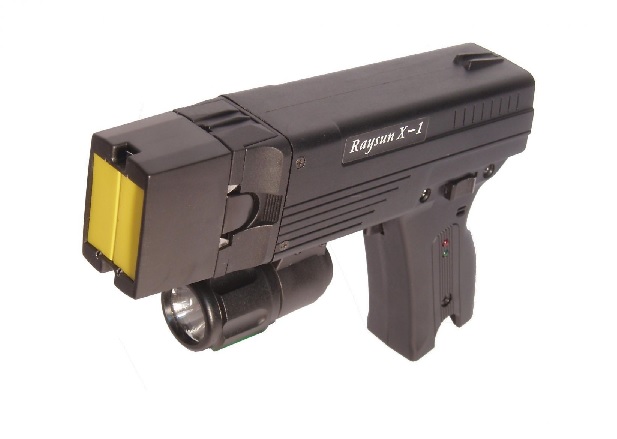With the increasing rate of crime reported across Nigeria daily, considering owning a self-defense weapon may be necessary. Some of the self-defense tools that have become commonplace globally include stun guns, pepper sprays, and taser guns. For many, stun guns are thought to be a more effective self-defense device than the others we mentioned alongside it. Thinking of owning a stun gun for yourself? Read on to find out what the position of the law on stun guns in Nigeria is.

-
Is Stun Gun Legal in Nigeria?
Yes, it is legal to use a stun gun in Nigeria if it’s used as a self-defense weapon. Other than that, that is, when used for criminal activities or intended to be used for a felony, then the use of stun guns becomes a crime liable to 3 years imprisonment. The federal enactments that support this stance include the Criminal Code, Firearm Act, Robbery and Firearms (Special Provisions), and Public Order Act.
-
What is the Position of the Law on Stun Guns in Nigeria?
In Nigeria, stun guns, along with pepper sprays, taser guns, and electroshock weapons, are classified as offensive weapons. According to federal enactments of Nigeria, the phrase “offensive weapons” in this context means any article that isn’t a fireman, or adapted to be used to cause injury to any person.
A stun gun fits the description of what an offensive weapon entails as it isn’t deadly, it only temporarily immobilizes a person. For this reason, you don’t need to get a Police clearance license to be able to buy, own, sell, carry, or display a stun gun.
But if a stun gun is used to commit a felony or is carried about with a criminal mind, a crime is said to be committed per the provisions of several federal legislations such as the Criminal Code, and Firearm Act, among others. This offense, that is, using a stun gun for criminal activities or with the intention to commit a crime, has an ascribed penalty of up to 3 years imprisonment.
Below are the federal legislations that we consulted to conclude that using a stun gun for self-defense is legal:
- Sections 1, 403B, 408, 223, 224, and 225 of the Criminal Code Act 1916
- Sections 8(3) and 13 of the Public Order Act 1979
- Sections 11 and 12 of the Robbery and Firearms (Special Provisions) Act 1984
- Sections 1 and 2 of the Firearm Act 1959
-
What is a Stun Gun and How Does it Work?
A stun gun is a self-defense tool that has become commonly used in many countries across the world. But what is a stun gun, and how does it work? Though it has a “gun” affixed to its name, a stun gun does not shoot bullets or projectiles. Instead, it functions by shooting prongs that deliver up to (and above) 3000 Volts of an electric jolt when it comes in contact with the skin for at least 3 to 5 seconds.
A typical stun gun isn’t deadly nor can it injure a person, however, it’s enough to stun or immobilize an assailant temporarily, thereby creating a distraction to escape the threat. Remember, the stun gun works best if the prongs capable of lending shock to an attacker stay on his(or her) skin for at least 3 seconds.
-
Tips on How to Use a Stun Gun Properly
It’s pointless to own a self-defense weapon that you cannot use. To improve your chances of survival during an attack or confrontation, you’ll have to learn how to use your self-defense weapons properly. For the sake of this part of the article, we will provide you with tips that will make you use a stun gun effectively.
The following bullet points will keep you informed on how to use a stun gun properly:
- You should have sufficient knowledge of the stun gun you own. This will help you know the stopping power of the stun gun, as well as the amount of electricity it releases when used, and the amperage of the stun gun.
- Practice how to use your stun gun before you get to use it. This will allow you to familiarize yourself with the shape, form, weight, and functionality of your stun gun.
- Use the safety switch whenever your stun gun is not in use. This will prevent accidentally firing the stun gun. In the event of imminent danger, the safety switch can easily be switched off, making it ready for immediate use.
- Learn to aim your stun gun. It’s only when your stun gun hits a target can your chances of survival be enhanced. The best area of your assailant’s body to aim for is between the base of the neck and waist. When that area can be targeted due to circumstances, you can aim for the shoulder, thigh, or legs. So, practice getting your aim right so your muscles can memorize the movements.
- Fire the stun gun properly to achieve the desired effect. Although the stun gun will not kill your attacker, ensuring the prongs make contact with your aggressor’s skin for at least 3 seconds will immobilize the attacker. Holding on to the trigger of the stun gun for a couple of seconds longer makes the effect of the stun gun more effective.
- Ensure to have fresh batteries in your stun gown at all times as dead batteries won’t work. To do this, periodically check if your stun gun has got sufficient power to power the device before you go out with it. Replace or recharge batteries when necessary.
- Use your stun gun per the provisions of the law. In Nigeria, stun guns should only be used for self-defense. Anything else outside this, you may be liable to spend up to three years in prison, if tried by a court of competent jurisdiction.